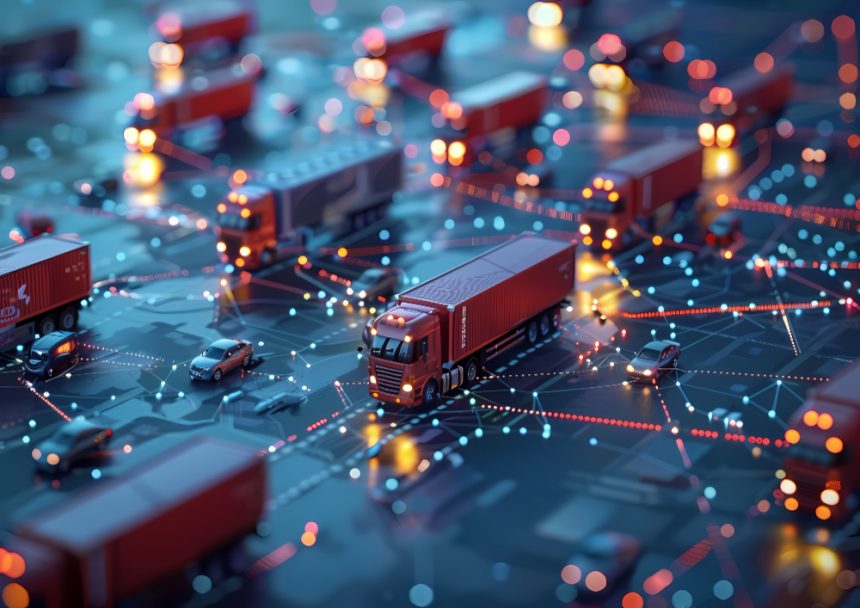Harnessing the Power of Machine Learning to Transform Logistics Operations and Revolutionize Transportation Networks: Exploring the Fundamental Principles, Cutting-Edge Techniques, and Real-World Applications of Artificial Intelligence in Streamlining Supply Chain Management, Enhancing Route Planning, and Driving Cost Efficiency in a Complex and Dynamic Industry
The logistics and transportation sector sits at the core of the global economy, facilitating the movement of goods, people, and information across borders and continents. Traditionally, this industry has relied heavily on manual planning, historical data analysis, and experiences-based decision-making, which, while effective, often falls short in the face of increasingly complex and rapidly changing demands. However, the advent of machine learning (ML)—a subset of artificial intelligence (AI)—has begun to revolutionize how companies operate, bringing about unprecedented levels of efficiency, agility, and intelligence.
Fundamental Principles and Cutting-Edge Techniques of Machine Learning in Logistics
At its core, machine learning involves algorithms that learn from data to identify patterns, make predictions, and support decision-making without being explicitly programmed for every specific task. This capability is particularly valuable in logistics, where variables such as demand fluctuations, traffic conditions, weather, and geopolitical events create a highly dynamic environment.
Some of the key ML techniques used include:
- Supervised Learning: Utilizing labeled datasets to predict outcomes such as delivery times or demand forecasting. For example, airlines and shipping companies use supervised learning to estimate transit times based on historical data.
- Unsupervised Learning: Finding hidden patterns or segmentations in unlabeled data, such as grouping customers based on purchasing behavior or optimizing warehouse layouts.
- Reinforcement Learning: An agent interacts with its environment, learning to make sequences of decisions that maximize cumulative rewards. This approach is used in autonomous vehicle navigation and dynamic routing.
- Deep Learning: Employing neural networks with multiple layers to analyze complex data such as images from surveillance cameras, sensor data, or customer feedback for quality assurance.
Real-World Applications of Machine Learning in Logistics and Transportation
1. Supply Chain Optimization
ML models analyze vast volumes of data—inventory levels, supplier performance, market trends—to optimize inventory management. Predictive analytics can forecast demand with high accuracy, reducing stockouts and overstock situations. Companies like Amazon leverage machine learning to dynamically adjust stock levels and proactively plan procurement.
2. Route Planning and Fleet Management
One of the most significant impacts of ML is on route optimization. Algorithms process real-time traffic data, weather forecasts, vehicle capabilities, and delivery windows to suggest the most efficient routes. Ride-sharing giants like Uber and logistics fleets employ reinforcement learning to continually improve routing strategies, reducing fuel consumption and delivery times.
3. Predictive Maintenance
Downtime of transportation assets is costly. Machine learning models predict failures by analyzing sensor data from vehicles and machinery, enabling predictive maintenance before breakdowns occur. This proactive approach minimizes operational disruptions and extends equipment lifespan.
4. Autonomous Vehicles and Drones
Autonomous trucks and drones are emerging horizons in logistics, powered by ML algorithms that enable safe navigation and obstacle detection. These innovations promise to reduce labor costs and improve delivery speeds, especially in hard-to-reach or rural areas.
5. Enhanced Customer Service
ML-driven chatbots and virtual assistants handle inquiries, process tracking requests, and manage booking processes seamlessly. Personalized delivery options and dynamic pricing models, powered by AI, improve customer satisfaction and loyalty.
The Future of Logistics and Transportation
As machine learning technologies mature, their influence on logistics is poised to deepen further. The future landscape envisions smarter supply chains powered by integrated AI systems that can adapt in real-time to disruptions, optimize routes instantaneously, and anticipate logistical challenges before they materialize.
Overcoming Challenges: While promising, integrating ML into logistics poses challenges, such as data privacy concerns, the need for high-quality data, and the complexity of deploying sophisticated AI models across diverse operations. Addressing these requires ongoing innovation, collaborations, and investments in infrastructure.
Innovation and Sustainability: ML not only enhances operational efficiency but also plays a vital role in advancing sustainability goals. Routing algorithms can minimize emissions, predictive analytics help reduce waste, and autonomous vehicles promise safer, greener mobility solutions.
Data-Driven Decision Making: Future logistics operations will depend heavily on data analytics enabled by ML. This shift toward predictive and prescriptive analytics ensures decisions are grounded in real-time insights, reducing guesswork and maximizing efficiency.
Autonomous Technologies: The integration of autonomous trucks, drones, and robotic warehouses will revolutionize last-mile delivery and freight movement, reducing costs and increasing reliability.
Conclusion
Machine learning stands as a transformative force in logistics and transportation, unlocking efficiencies previously deemed unattainable. By harnessing data, leveraging advanced algorithms, and embracing autonomous technologies, the industry is moving towards a future characterized by smarter, safer, and more sustainable mobility solutions. As these innovations continue to evolve, businesses that adopt and adapt to AI-driven strategies will be best positioned to thrive in an increasingly complex and competitive landscape, ultimately delivering faster, cheaper, and more reliable services to customers worldwide.







